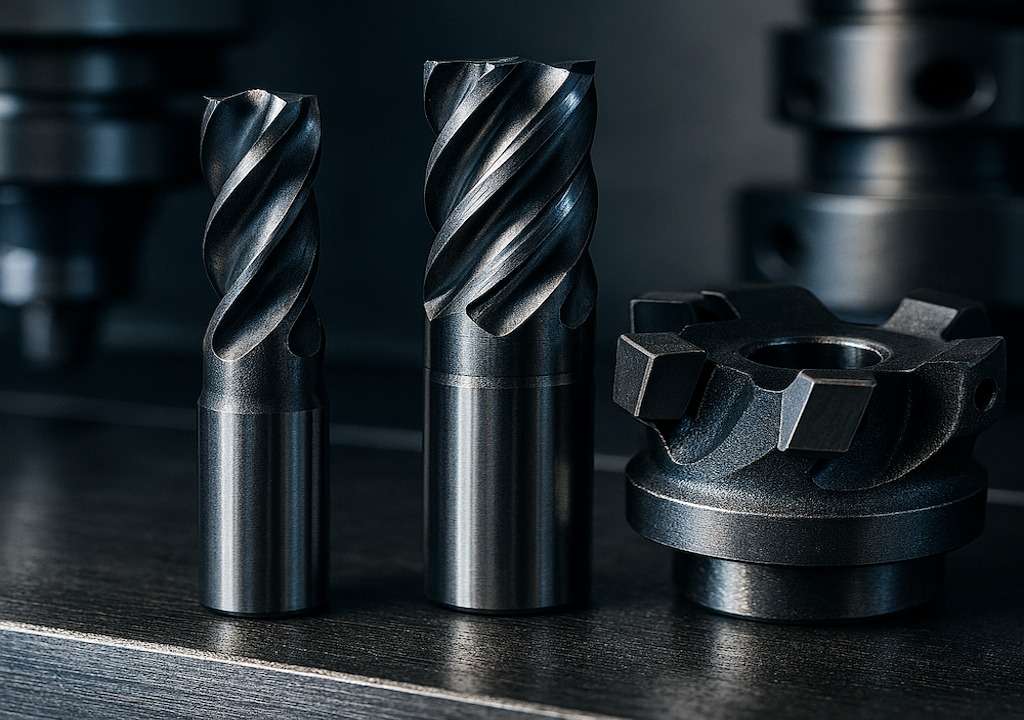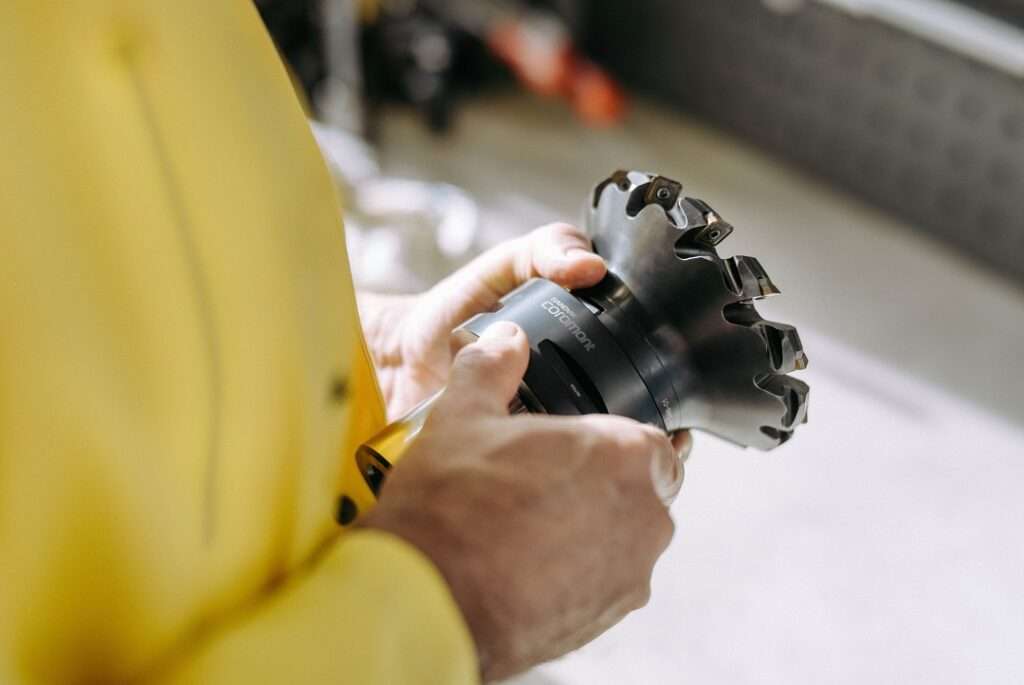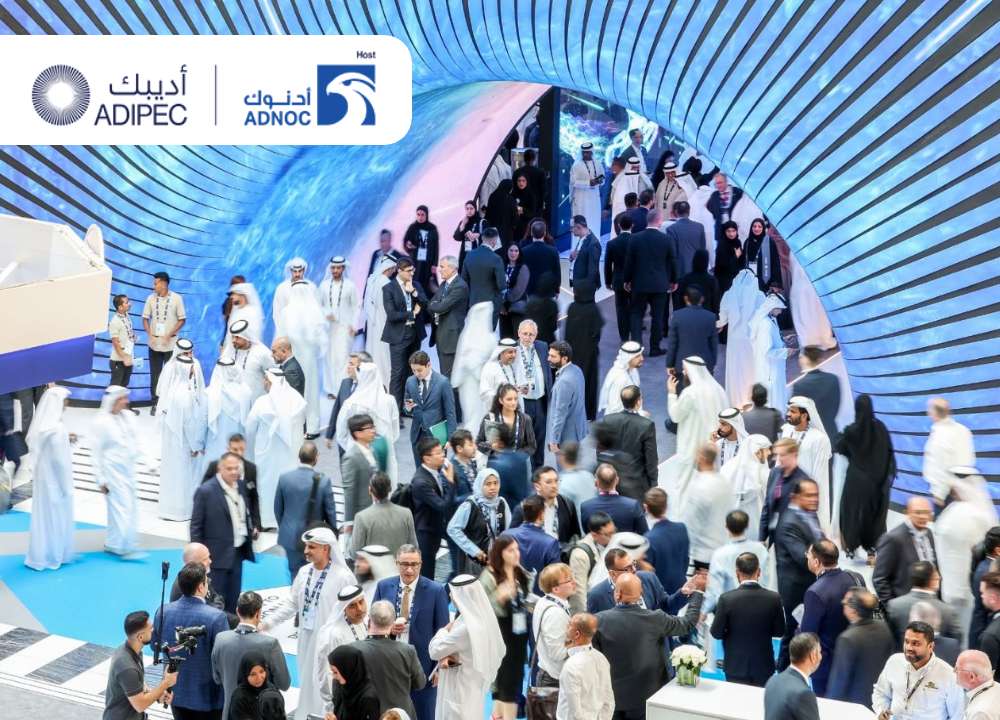The world of precision manufacturing is evolving faster than ever. The rising demand for tighter tolerances, superior component quality, and cost efficiency is reshaping industry expectations and practices. Manufacturers are working with materials that are more robust, heat-resistant, and often less forgiving than conventional workpieces. As a result, the standards for cutting tools have risen correspondingly.
Carbide tools, renowned for their inherent hardness and toughness, have long been the backbone of high-performance machining. But in the face of today’s complex and demanding manufacturing environments, even the best carbide tool needs an extra ‘edge’ to meet production and quality goals. This is where advanced coating technologies come into play, transforming limitations into possibilities.
Precision manufacturers are entering an era where material science, surface engineering, and data-driven process control converge. Market projections for both carbide tooling and advanced coatings confirm that the winners will be those who treat coating selection as a strategic lever, not an afterthought. Carbide tool demand is forecast to climb from USD 12.3 billion in 2024 to USD 18.3 billion by 2030, while the global PVD coatings sector is poised to jump from USD 23.1 billion to USD 33.1 billion in the same window, outpacing GDP and signalling structural change in cutting technology.
Market size projections show strong growth in both the carbide tools and PVD coatings sectors.

Why Coatings Matter More Than Ever
Escalating Material Challenges
Aerospace, e-mobility, and renewable-energy components routinely involve nickel super-alloys, titanium, CFRP stacks, or quenched-and-tempered steels whose machinability index is 40-70% lower than conventional alloys. Uncoated carbide struggles with oxidation at >800 °C, crater wear, and built-up edge that can double surface roughness within minutes.
Economic Multiplier Effect
A tool that lasts 20% longer before indexing reduces line stoppages, lowers WIP inventory, and extends the MTBF of spindle assemblies by cutting vibration episodes by 8-12%. With labour and energy costs rising, the cost per edge dominates TCO discussions.
Challenges Facing the Industry
Heat Management in Dry Machining
As environmental regulations tighten and sustainability concerns grow, there is increasing pressure to reduce or eliminate cutting fluids. This “dry machining” approach creates extreme thermal challenges for cutting tools. While current coatings offer improved heat resistance, the industry still struggles with effective heat dissipation in completely dry, high-speed applications. Development of coating systems with thermal conductivity gradients represents a promising but challenging frontier.
Coating Adhesion on Complex Geometries
Modern cutting tools often feature complex geometries with intricate chipbreakers, variable helixes, and micro-features. Achieving consistent coating adhesion across these complex surfaces remains challenging. Edge preparation, particularly for sharp-edged tools, presents a delicate balance between maintaining cutting performance and ensuring coating integrity. Approximately 15% of coating failures are attributed to poor adhesion on complex geometries.
Balancing Hardness and Toughness
The recurring challenge in coating development remains finding the optimal balance between hardness (resistance to deformation) and toughness (resistance to fracture). Ultra-hard coatings often suffer from brittleness, while tougher coatings may not provide sufficient wear resistance. This challenge becomes acute when machining materials with heterogeneous properties, such as composite materials or additively manufactured parts with varying densities.
Cost-Benefit Justification
Despite clear performance advantages, the adoption of advanced coatings faces resistance due to initial cost concerns. Premium coatings can increase tool costs by 15-30%, creating hesitation among manufacturers focused on immediate expenses rather than total production economics. Demonstrating the long-term cost advantages through comprehensive case studies and ROI analyses remains an ongoing challenge for coating suppliers.
Real-World Impact
Aerospace Manufacturing
In aerospace component manufacturing, where alloys like titanium and Inconel are common, PVD-coated carbide tools have become essential. For instance, when machining titanium turbine blades, AlTiN-coated end mills have demonstrated up to 40% longer tool life compared to uncoated versions, while maintaining the strict dimensional tolerances required for these safety-critical parts. The high-temperature stability of these coatings is particularly valuable when machining heat-resistant superalloys (HRSA) that generate extreme cutting temperatures.
Automotive Industry
The automotive industry’s shift toward lightweight materials has introduced new machining challenges. When cutting compacted graphite iron (CGI) for modern engine blocks, traditional carbide tools often experience rapid wear. Diamond-like carbon (DLC) coated tools have emerged as a solution, reducing the adhesion tendency of the material and extending tool life. This has allowed manufacturers to maintain production rates while working with these harder, more abrasion-resistant materials.
Medical Device Manufacturing
The medical device sector demands exceptional precision and surface finish quality. When producing titanium implants and surgical instruments, nanocomposite PVD coatings like TiSiN have proven valuable. These coatings provide the hardness needed to machine titanium alloys effectively while creating the ultrasmooth surfaces required for medical applications.
PVD & Beyond: Survey of Today’s Coating Landscape

Data consolidated from peer-reviewed tribology studies and supplier datasheets.
Tool-Life Benchmarks
In a controlled dry turn of AISI 4340 at 300 m/min, a triple-layer CVD Al₂O₃/TiCN insert delivered 14.75 minutes of flank-wear limit versus 10.08 minutes for a TiAlN/AlCrN PVD insert— a 31% gain, mainly because the 5-µm Al₂O₃ cap slowed crater propagation. Conversely, the same study recorded a best-in-class Ra of 0.276 µm on the PVD tool owing to its thinner edge radius. Matching coating to objective (tool life vs. surface finish) remains vital.
HiPIMS: The New Gold Standard
High-Power Impulse Magnetron Sputtering elevates PVD by pulsing power densities up to 3 kW/cm², generating ionised metal fluxes > 90% and depositing defect-free films at just 1-2 µm.
- Coating Density & Smoothness: HiPIMS AlCrN layers exhibit 10-15% higher packing density than DCsputtered equivalents, lowering coefficient of friction by 0.05.
- Edge Integrity on Complex Shapes: Ion-guided deposition wraps around chip-breaker geometries and micro-lands, avoiding the “shadowing” seen in traditional line-of-sight CVD.
- Rapid Recipe Iteration: In-house chambers like CTC Praezision’s CC800® HiPIMS allow batch-to-batch parameter tweaks within hours, accelerating customer-specific solutions.
Case studies show HiPIMS-coated carbide drills increasing hole counts in 17-4 PH stainless by 42% before first edge wear, while reducing thrust force by 18% compared with standard AlTiN.
Sustainability & Regulation – The Silent Drivers
Europe’s sunset of hexavalent chromium plating by 2024, plus tightening VOC ceilings in paint shops, is pushing OEMs toward green PVD platforms and low-VOC topcoats across the value chain. Bio-based and waterborne industrial paints are expected to grow from USD 6.3 billion in 2024 to USD 11 billion by 2032, opening hybrid coating stacks where a hard PVD under-layer is over-sprayed with a low-VOC anti-corrosion sealer.
Digital Coating Engineering – Industry 4.0 Arrives
Smart coaters now stream plasma parameters, substrate temperature, and residual-gas spectra into cloud dashboards. Predictive algorithms can flag target poisoning 30 minutes before arcing, reducing scrap by 12% in pilot programmes. Coupled with chip-linked tool-ID (DataMatrix on inserts), users can correlate edge failure with exact coating batch, closing the loop on quality.
Looking Over the Horizon: Smart & Self-Healing Films
Research into micro-capsule or vascular self-healing layers suggests future tools may repair micro-cracks autonomously at <250 °C, extending edge life in ISO S alloys where notch wear currently dominates. Although commercial adoption is five-plus years out, CAGR projections for smart coatings exceed 17% to 2032.
One of the cornerstones of our innovation at CTC Praezision is our in-house HiPIMS coating facility. This state-of-the-art equipment gives us several important advantages:
- Rapid Customisation: We can experiment with coating recipes, adjust parameters, and quickly deliver solutions tailored to special geometries or challenging workpiece materials.
- Quality Control: In-house control allows us to rigorously monitor every batch, ensuring consistency, reliability, and traceability that our customers can trust.
- Faster Development: Because we don’t rely on external partners for coating, we can accelerate the innovation cycle and more quickly respond to customers’ evolving needs.
The journey of progress in tool technology is far from over. New materials, novel manufacturing techniques, and higher expectations will keep challenging our industry. Tool coating is no longer just an add-on but is becoming an integral part of the engineering design of every advanced cutting tool. It is about enabling our partners to do more with less, whether that is pushing cycle times, boosting output, or improving sustainability.
At CTC Praezision, we remain dedicated to uncompromising innovation and close partnership with our customers. By investing in the best people, the best technology, and the best processes, we aim to deliver that elusive “edge” in every sense of the word.
Strategic Takeaways for Tool Buyers
- Integrate Coating Dialogue Early: Feed rates, MQL vs. dry, and workpiece thermal conductivity must inform coating choice, not vice versa.
- Demand Data Sheets with HiPIMS vs. DC Benchmarks: Density, bias voltage, and ion current density should be disclosed.
- Audit Sustainability Metrics: Ask for CO₂ per batch and VOC content in any top coat; future RFQs will score on these KPIs.
- Leverage In-House HiPIMS Agility: Short development loops enable niche geometries (micro-land drills, chamfered inserts) to receive bespoke recipes within days.
- Plan for Digital Traceability: Insist on batch-linked QR codes and SPC dashboards; they are inexpensive but invaluable for root-cause analysis.
Coatings have moved from ‘extra insurance’ to the beating heart of carbide tool strategy. With HiPIMS enabling near-perfect film architectures, sustainability standards reshaping chemistries, and Industry 4.0 driving real-time control, the cutting tool’s “edge” is no longer defined solely by carbide grades or geometry. It is forged in a plasma cloud, measured in nanometres, and validated by data. Forward-thinking manufacturers that align machining parameters, coating science, and digital analytics will unlock the uptime, quality, and ESG advantages that tomorrow’s competitive landscape demands.







